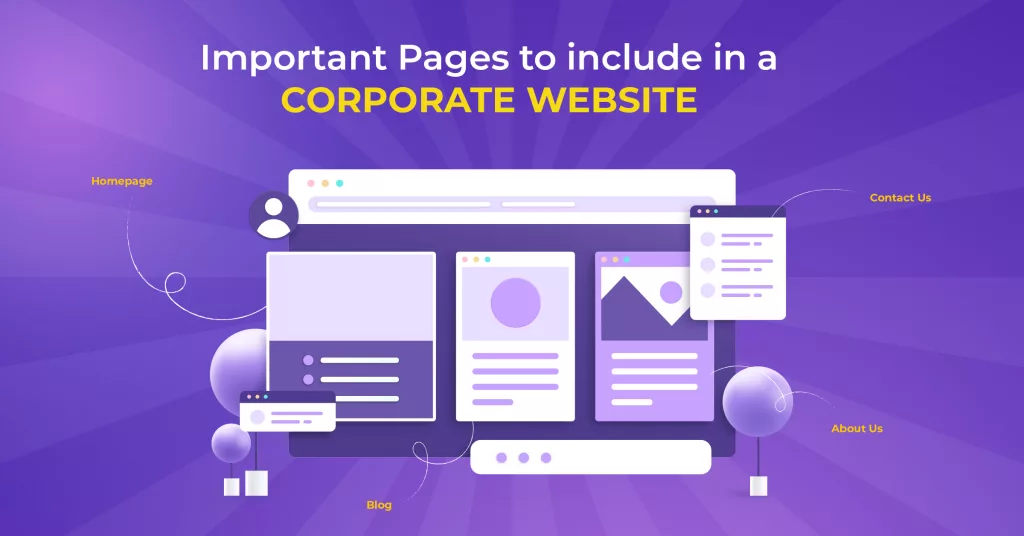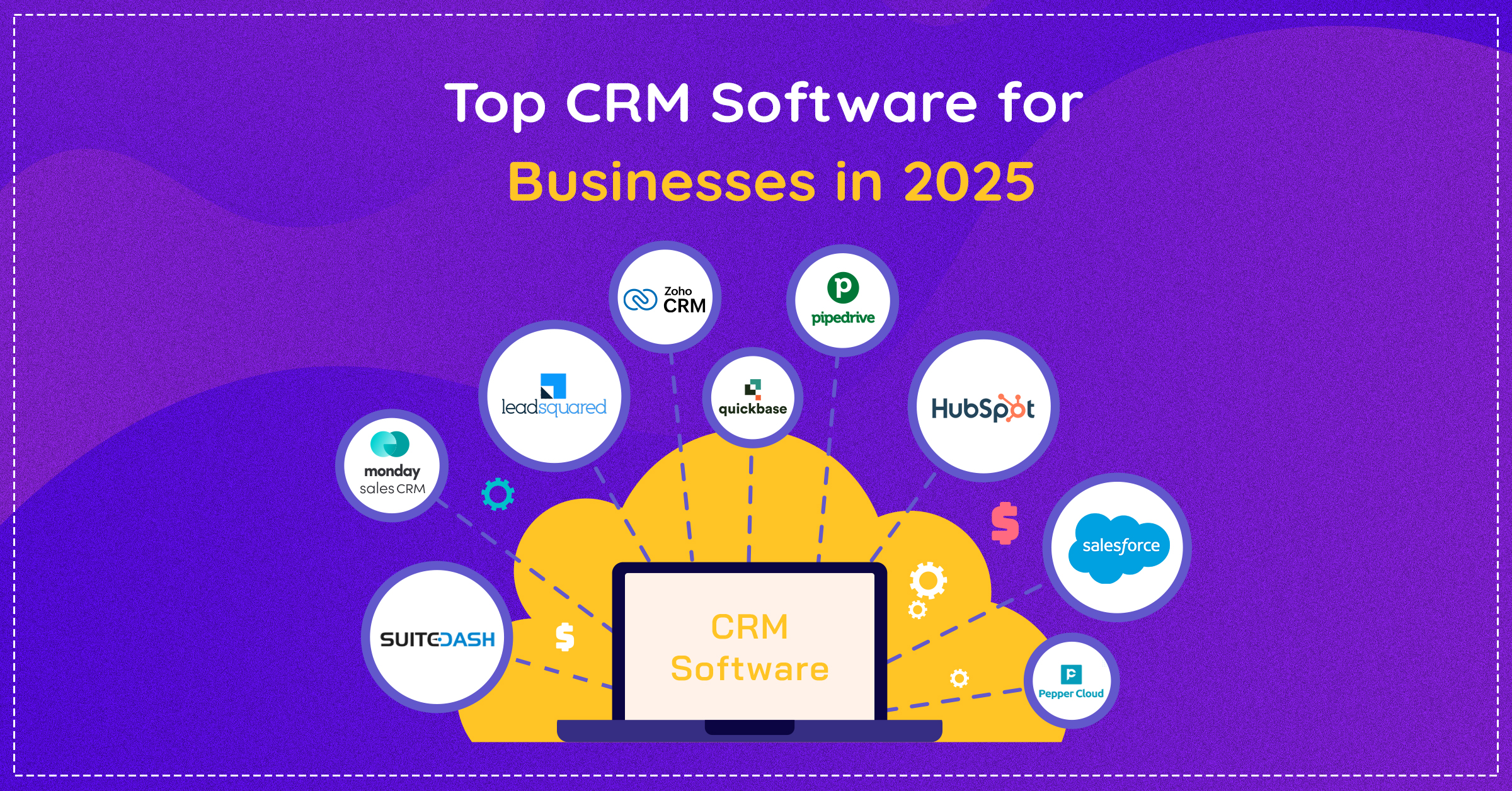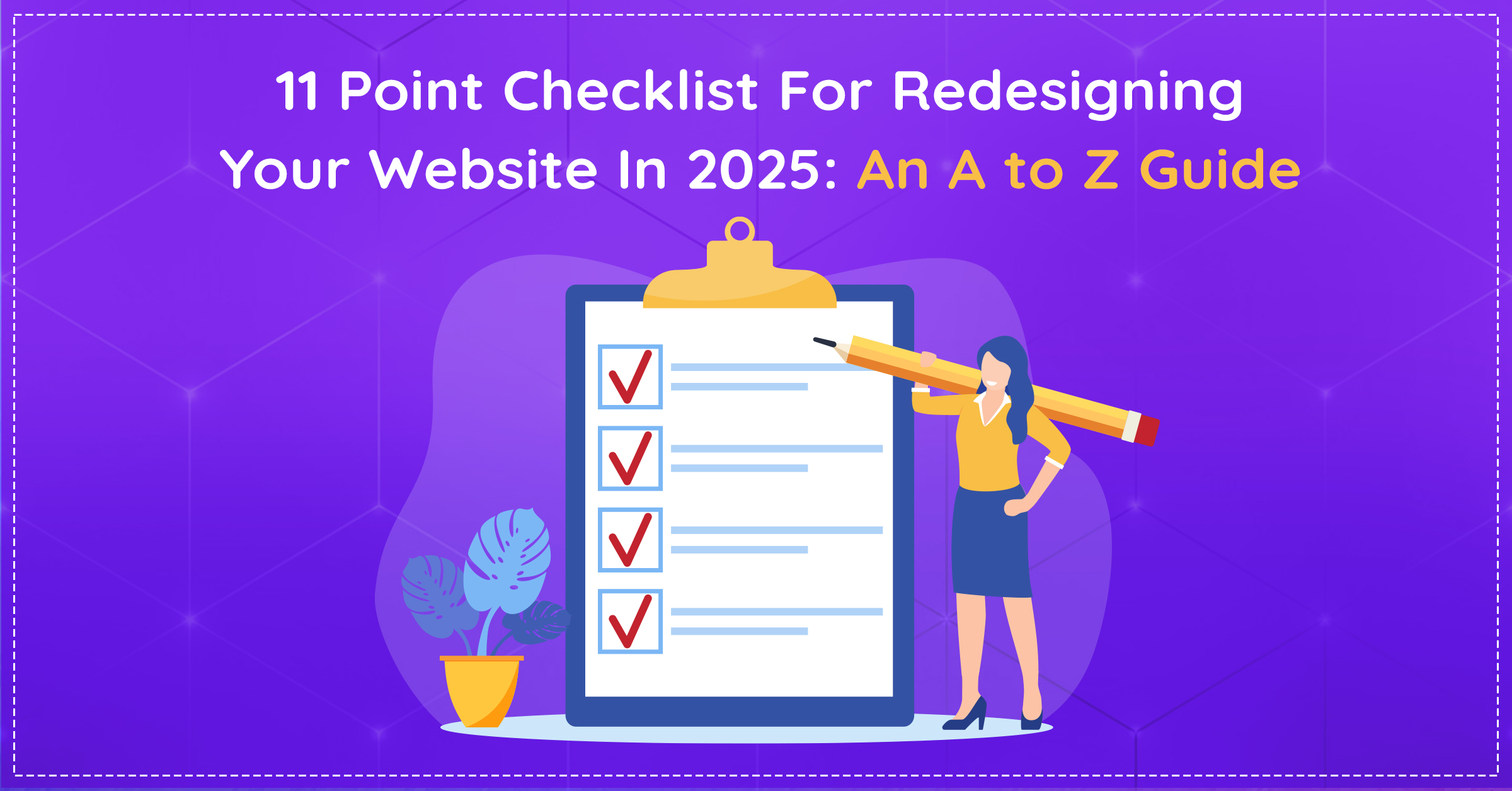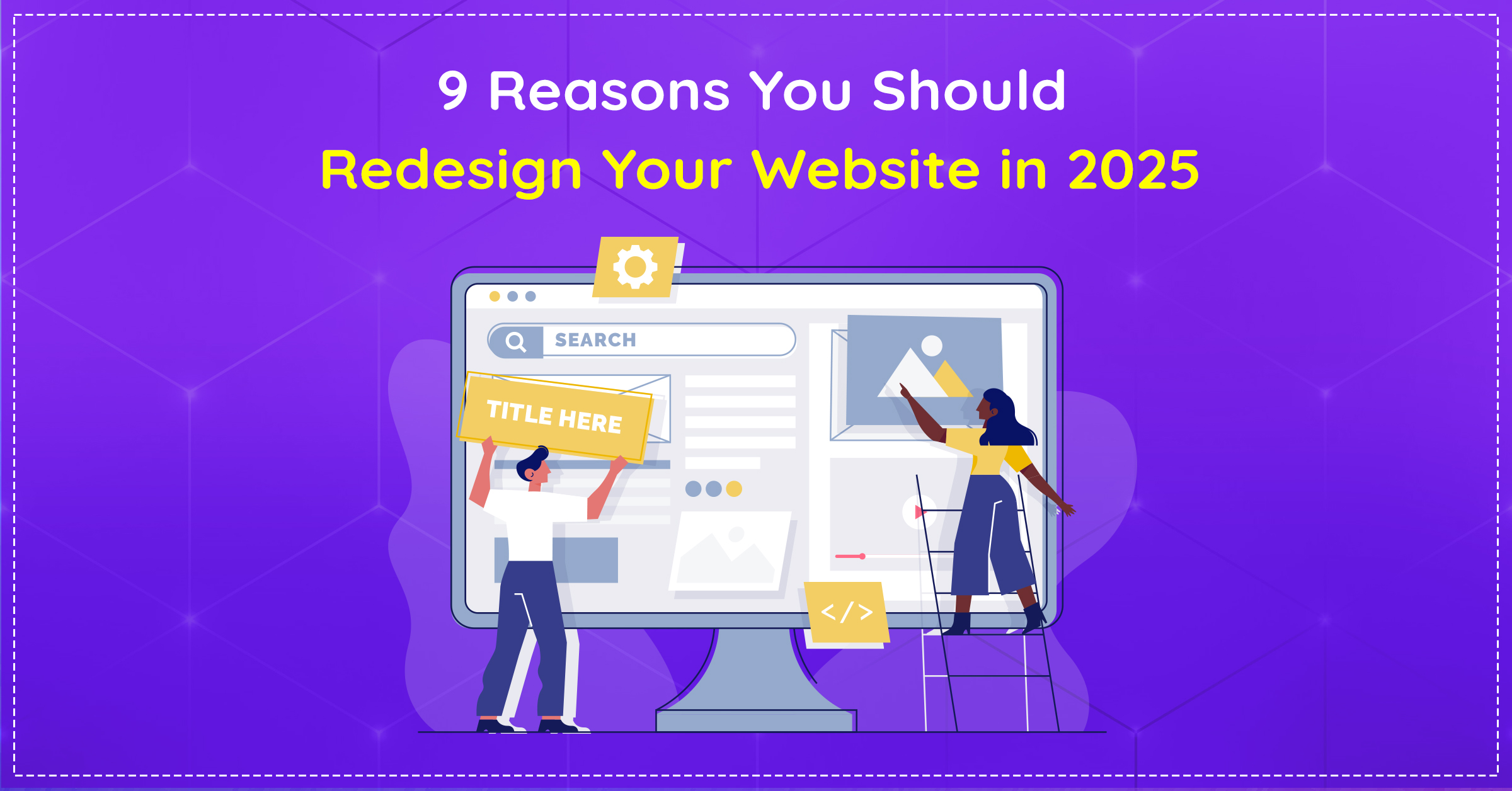A corporate website is the first impression many potential customers will have of your business – so it’s important to make sure it’s a good one! Building an effective website takes a little bit of planning to ensure all the key information is easy for visitors to find. This blog will help you understand what sections and pages are essential for any corporate website.
Our team of project managers, web developers, and business analysts have compiled this list after delivering hundreds of successful websites for clients all over the world. With their wealth of experience, be sure to take their advice on board when creating your own website.
Homepage

The homepage of a website is often seen as the “hub” of the site, as it is typically the first page visitors will land on when they enter the URL. It serves as a central point of navigation, displaying the most important and relevant pieces of content and guiding users to other pages on the site.
Homepages should be designed with an eye to usability, ensuring that visitors can quickly and intuitively access information or navigate to other parts of the website. Additionally, homepages can help to increase branding recognition, as it is often the place where logos and other visual elements are prominently displayed.
About us page

Including an About Us page on a website is essential for providing potential customers with information about the business. This page should include a brief overview of the company’s history, mission statement, team members, and any awards or accolades the company has received.
All of this combined will help to establish credibility and trust with website visitors, allowing them to feel confident in their decision to choose your business.
Careers page
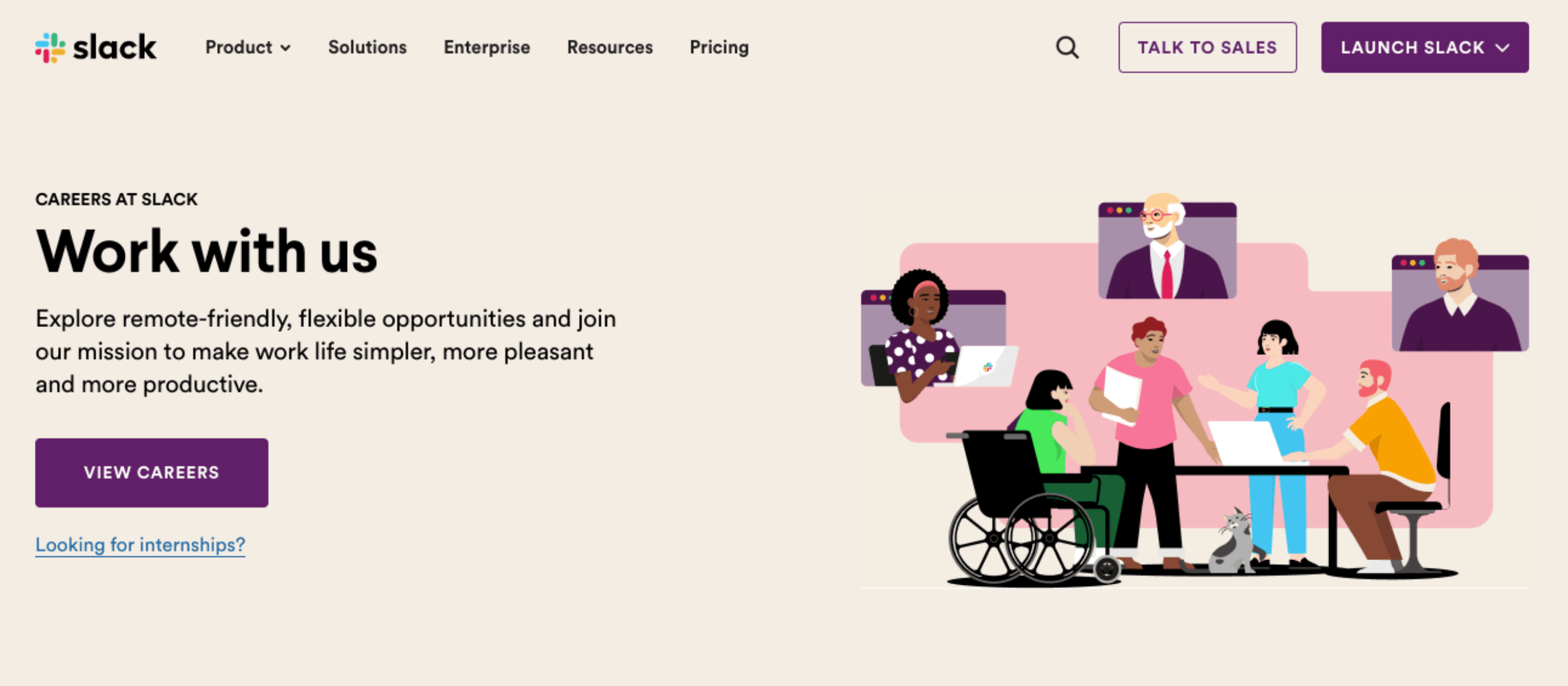
Careers pages are an essential part of any website. They provide visitors with information on job openings in the company and how to apply for them. Careers pages can also help to attract quality candidates by providing insight into the company’s culture, benefits, and other factors that make it an attractive place to work.
Additionally, they offer a great opportunity for employers to showcase their commitment to diversity and inclusion. By providing a dedicated page for career-related information, companies can ensure that their hiring process is as efficient and transparent as possible.
Contact us page
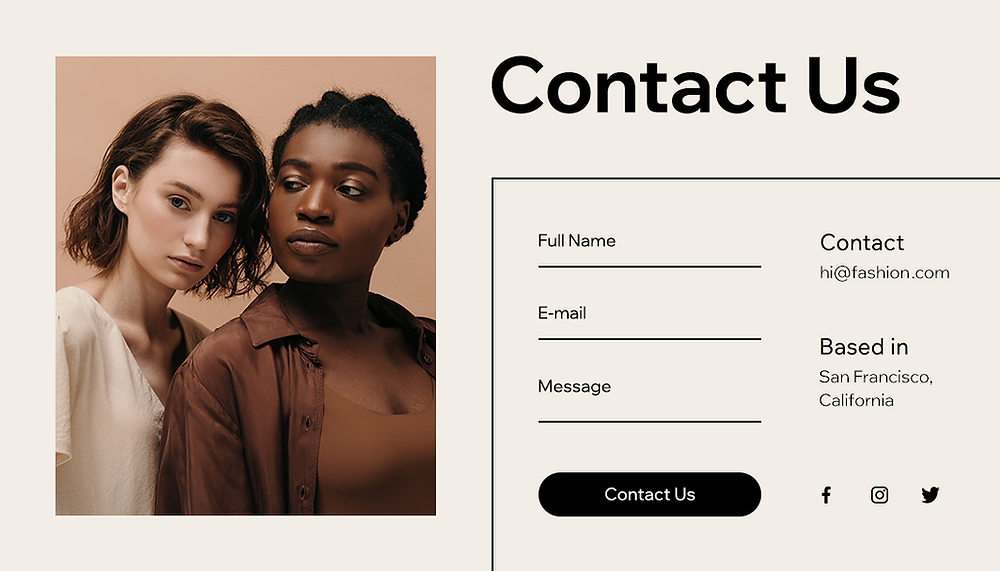
Contact us is the most important page on a corporate website. When creating a contact us page, there are several pieces of information that should be included in order to ensure that customers are able to easily connect with the business. This includes the contact details, such as an email address, physical address, and telephone number, as well as a contact form for customers to fill out.
Additionally, it is important to include details regarding the company’s hours of operation and any other relevant information that customers may need in order to contact the business. By including all of this information, website visitors will be able to easily and quickly get in touch with the business.
Bonus
- You should also include your company’s active social media handles on the contact page. This way users can connect with your brand through a platform of their choice.
- In order to ensure that users can quickly and easily find your business’s location, it is recommended to include the corresponding Google Maps code when inputting your address. This will provide a direct route to your office and eliminate the need for manual searching.
Service or product page
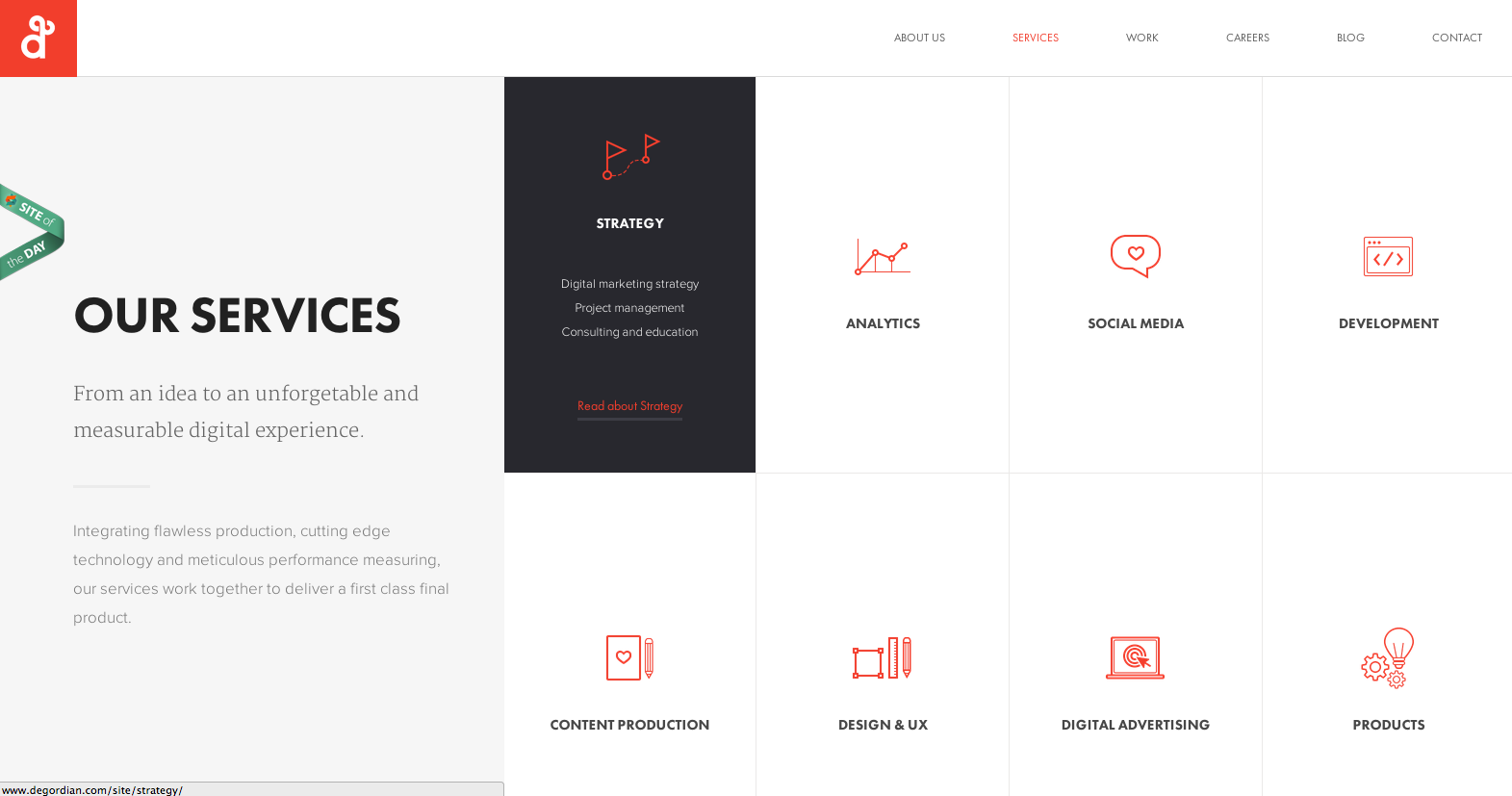
A dedicated service page on a website is an essential component of any successful online presence. It serves as a one-stop-shop for potential customers to learn more about the services offered by a business, as well as any additional key information relevant to their decision making process.
The page should include details such as the scope of services or product features, pricing, customer testimonials, call to action (CTA) and a lead form. Additionally, the page should be optimized for SEO to ensure maximum visibility and traffic. By including a dedicated service page on a website businesses can effectively showcase their services and ensure potential customers have all the information they need to make an informed decision.
Blog page
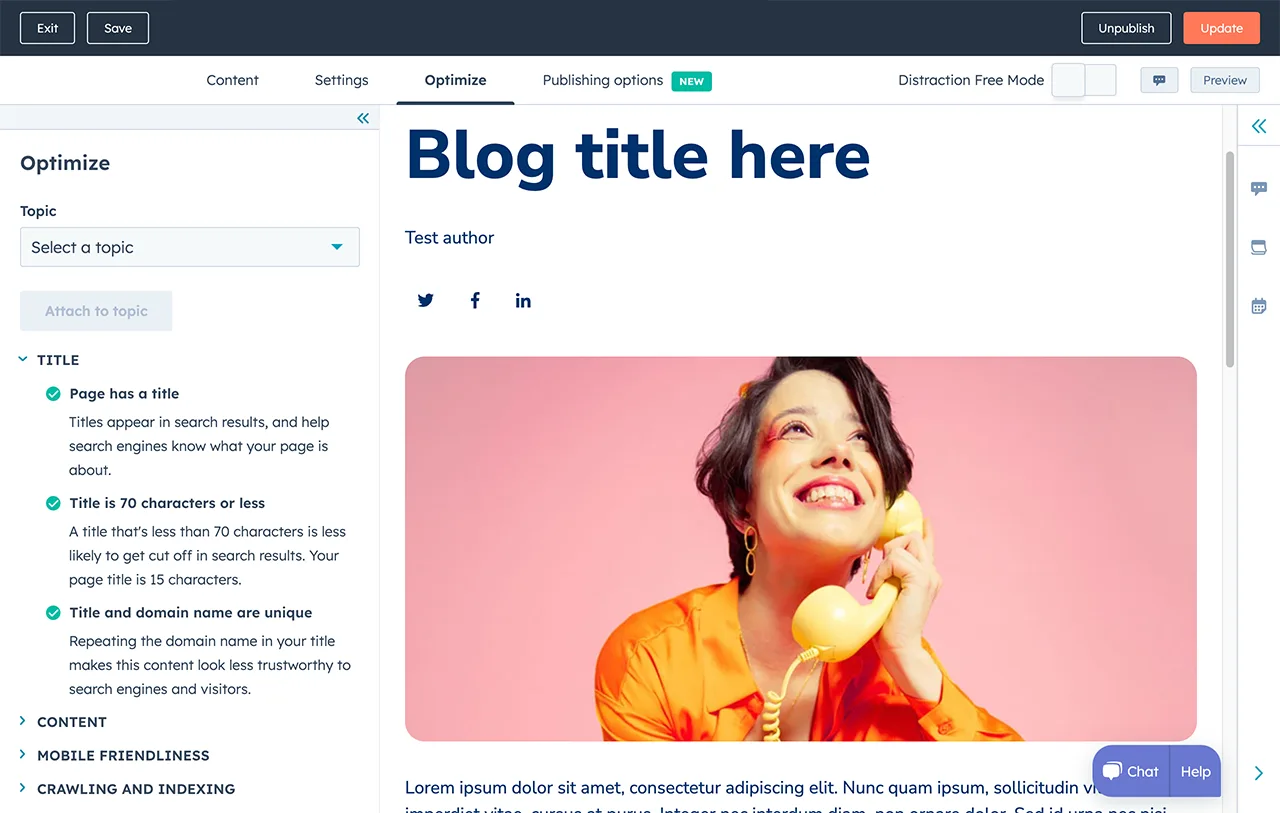
A blog page is an essential part of any website, as it serves as an outlet for content creation, promotion, and engagement. Blogging allows businesses to showcase their expertise in their industry or niche, as well as build trust with customers by providing useful information and insights.
Additionally, blog content can be used to optimize a website for search engine rankings, helping to attract more organic traffic and potential customers. Having a blog page on a website is a great way to increase visibility, generate leads, and build relationships with customers.
Privacy Policy

The primary purpose of a privacy policy page is to inform website visitors about how their data is collected, how it will be used, and who will have access to it.
This page also serves as a resource for visitors to gain an understanding of any relevant laws and regulations related to the use of their data. Ultimately, a privacy policy page provides transparency and can help build trust with website visitors.
If you’re looking to drive organic traffic through SEO, a privacy page would be really helpful. Google and other search engines lay more emphasis on websites that have privacy policy pages.
Terms of use
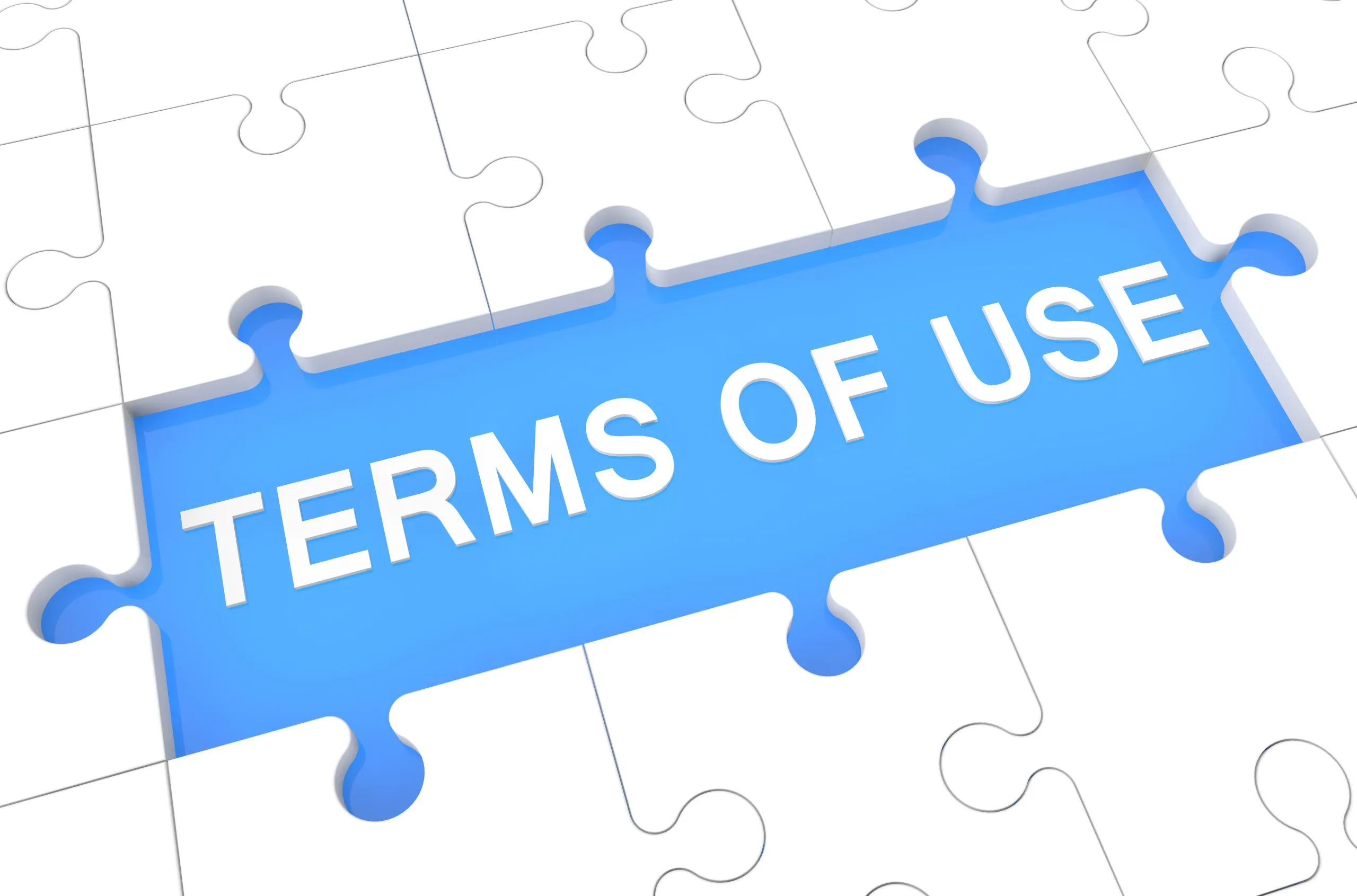
The terms of use page on a website is an important tool for informing users of their rights and responsibilities on the site. It is essential for any website to have comprehensive terms of use page that outlines the standards expected of its users and the limitations for acceptable use of the site.
Terms of use can include prohibitions against unlawful or unethical activities, or rules regarding data collection, privacy, or intellectual property. By providing users with a clear set of expectations and guidelines, website owners can improve the user experience and ensure a safe and secure environment for all site visitors.[
1. Mission and vision
The mission and vision section of a website can provide valuable insight into the core values, goals, and purpose of the business. This section is often used to communicate the company’s objectives and to help visitors understand why the company exists.
Furthermore, this section can help build trust and loyalty among customers by providing transparency about the company’s mission. It is important for businesses to ensure that this section is regularly updated and accurately reflects their values.
This section is typically included on ‘About us’ page of the website
2. Management team
This section provides visitors with information about the individuals behind the company and their respective roles. It can be used to provide insight into the team that is responsible for the running of the business, as well as to demonstrate their qualifications and past successes.
With a well-crafted management team section, businesses can create trust in their brand and build customer relationships. You can also share the contact details i.e. mobile no., email id, LinkedIn, or Twitter handle of the respective team member. This section can be included within the about page or you can have it as a dedicated page.
3. Chairman’s message
The Chairman’s Message section of a website is an important part of the overall presentation of the company or organization. This section typically contains a direct message from the chairman, providing insight into the company’s values and objectives. This section on a corporate website helps solidify the brand’s image.
4. Testimonials section
The testimonials section helps potential customers get an insight into the customer experience. Using this section, a company can showcase customers’ experiences, their satisfaction with the product or service, or even their thoughts on the customer service they received.
Such transparency can provide potential customers with the confidence they need to purchase from the company. Furthermore, this section can be used to build trust between customers and businesses. This section can also be a standalone page on the site.
You should have this section on the home page or the respective product/service page. This also acts as social proof for your business.
Bonus: You can take reviewers shared by users on Google Business, Trustpilot, Yelp, JustDial, Tripadvisor, etc. You can even give a link to your company’s profile on these websites.
5. Awards, Certificates, and Accolades
The awards, certificates, and accolades section on your website plays an important role in showcasing your achievements and successes. It is a great way to build credibility and trust with potential customers or clients, highlighting any awards you have received, industry partnerships or recognitions, or any other accolades.
This provides visitors with an additional layer of assurance that you are an established and reliable business. Incorporating this section into your website will help boost your reputation, as well as increase your visibility in the online marketplace.
6. Case studies or Portfolio or Our work section
The presence of case studies on a website can be invaluable in terms of adding trust to potential customers. By showcasing successful projects, companies can demonstrate their capabilities and expertise in a way that words alone cannot.
Additionally, case studies provide potential customers with tangible proof of the quality of the product or service being offered. As such, it is highly recommended that any website have an easily accessible section dedicated to case studies, in order to engage and persuade visitors to take the desired action.
7. Corporate social responsibility
The corporate social responsibility section on the website serves to showcase the company’s commitment to upholding ethical standards and providing value to the community. This section typically outlines the company’s mission, programs, and initiatives that help the environment, and society.
It also provides an opportunity for customers to learn more about the company’s core values and how they are committed to creating a better future for everyone. By having this section on their website, companies can demonstrate to customers that they are dedicated to making a positive impact in their community. This is a must-have page for a large corporations and MNCs.
8. Gallery
In the gallery section on the website, you can showcase images from different events, conferences, and exhibitions in that the company has participated. It can also include product photographs and videos.
9. FAQ section
Having an FAQ (Frequently Asked Questions) section on a website can help to reduce the number of queries that customers or visitors may have about the website and its various features.
This section can provide quick answers to commonly asked questions, meaning that customers can find the information they need quickly and easily, without having to contact the website directly. An FAQ section on a website is an invaluable tool for ensuring the satisfaction of visitors.
10. Our History section
Our history section typically includes information about the founding of the business, along with milestones and accomplishments throughout the years. Having this information easily accessible on any website is a great way to create an emotional connection with potential customers and show them why they should choose your company over others.
11. Shareholders section
Investors and shareholders are an integral part of any company, and having an easily accessible section on a website dedicated to them is essential. This section should include important information such as yearly reports, financial statements, and any relevant news that may be of interest to investors.
Additionally, it should be easy to find on the website and clearly labeled so shareholders can easily access it. Having this section will help keep shareholders informed of the company’s progress and provide a reliable source of information for potential investors.
This section or page is mandatory for publicly traded companies. It is part of compliance put forward by government agencies.
12. Life at the company section
The Life at Company section on a website is becoming increasingly important as employers seek to present an accurate and engaging representation of their organization to potential employees. This section should be used to provide an in-depth look into the culture of the business, including employee benefits, activities and team events, and other aspects of the working environment.
By providing this information, employers can attract high-quality talent and help ensure that the people they hire are well-suited for the job. Additionally, including a Life at Company section on a website can help employers to differentiate themselves from their competitors, making them stand out from the crowd.
13. Corporate Governance section
Having a corporate governance section on a website can be beneficial for any business. This section can help to provide transparency, inform stakeholders of the company’s mission and values, and even help build trust with customers.
Having a clear corporate governance section on a website can also provide an overview of the company’s overall direction and objectives, helping to create an understanding of how they are structured and how decisions are made. Furthermore, this section can help to ensure that all members of the organization are following the same set of rules and regulations. In short, having a corporate governance section on a website can be key to creating a successful business.
14. Key stats section
The key stats section can be used to showcase key information from your business in a numeric way. This makes it super easy for your visitors to understand the information. A few examples of stats that can be part of the key stats section are the number of years in business, number of customers, man-hours worked, number of successful deliveries to date, number of countries served, and so much more.
15. Our client’s section
The ‘Our clients’ section acts as social proof for the visitors visiting your website for the first time. You can showcase the companies you have worked with in the past, building trust and credibility with potential customers. Additionally, having a ‘Clients’ page on your corporate website helps create a positive impression of your brand and services.
16. Contact form
Having a contact form on a website is an essential way for visitors to get in touch with the sales team or the owner of the website. By having an inquiry form in multiple locations of the website, visitors will be able to easily and quickly connect with the business and make their inquiries. This is beneficial for both parties; visitors can make their inquiries quickly, while website owners can respond promptly and efficiently.
Bonus tips:
- Include inquiry form on key pages of the site i.e. home and service page.
- You can connect your inquiry form to the CRM. This will help you view the leads directly in your CRM
17. News section
Including a news section on a website is an important part of providing visitors with relevant, up-to-date information. A news section can be used to share announcements, updates, and other important pieces of information that will help inform visitors about the website and the business or organization behind it.
Furthermore, having a news section can help create a sense of community by allowing visitors to discuss topics related to the website and its services. By having a news section, websites can ensure that their visitors are always informed and engaged with the latest developments.
18. Why choose us section
An informative ‘Why choose us’ section is a key component of any corporate website, as it allows visitors to understand the advantages of selecting your business over competitors. This section should include pertinent details on the services and products provided by your organization, along with any benefits customers can expect when partnering with your company.
By presenting this information clearly, customers are able to make educated decisions regarding which business they choose to collaborate with.
19. Sliders section
Sliders, also known as carousels, are a popular feature of many websites and can be found on the homepage. They offer visitors a visual way to quickly browse through different parts of your website, such as featured products, offers, announcements, or blog posts.
Having a slider on your homepage can help to draw attention and increase engagement with your website. It also allows you to display more information in an efficient and visually appealing way, helping visitors quickly find what they’re looking for. Ultimately, having a slider section on your website can help to make it more inviting and user-friendly for visitors.
You can have an image or a video as a slider. However please note that having a video can increase the size of the page and would take longer to load.
20. Media Kit
A Media Kit section on a website serves as an essential resource for journalists, influencers, and other media professionals to quickly find key information about a company or organization. This section is typically filled with information such as press releases, company overviews, contact information, brand guidelines, and high-resolution images and logos.
Having a Media Kit section on the corporate website enables media professionals to easily access needed information and makes them more likely to cover the business in their work. This helps in ensuring all external communication involving your brand adheres to the design standards of the company.
21. Events
The Events section of a corporate website can provide an important platform for brands to connect with site visitors. By displaying upcoming events, such as seminars, conferences, and other activities, companies can demonstrate their involvement within the business community and their commitment to keeping customers informed on the latest industry trends.
Additionally, this section can also help customers find out more information on activities that they may be interested in attending.
22. Social feed
Including social feeds from Twitter, Instagram, and LinkedIn on your website can have numerous benefits for your business. Showing these feeds on your website can help to create a more personal connection between your business and its customers. It can also help to increase brand awareness by giving customers direct access to all of the latest posts and updates from your social media accounts.
Furthermore, having these feeds on your website can help to encourage customers to interact with your brand on social media. In this way, including social media feeds on your website can be an effective way to help drive customer engagement.
23. Ebook download section
An ebook download page on a website is a page that allows visitors to download books or other reading material in digital format. These ebooks are typically in pdf format and relevant to customers’ needs.
This type of page is beneficial to companies as it can act as a great lead magnet or can help generate more interest in their products or services.
Examples of ebooks could be: 20 exercises to shape your body, a 30-day SEO plan, a startup ideas guide, etc.
24. Newsletter
The newsletter section is an important feature of many websites, providing an easy way for visitors to stay informed about the latest news and updates from the website. By subscribing to the newsletter, users can receive regular emails which include news, updates, and other relevant content related to the website.
This allows them to stay up-to-date on all the latest developments, allowing them to make informed decisions about their use of the website. Furthermore, newsletters can be used as a promotional tool for the website, helping to increase brand awareness and loyalty among existing and potential customers.
Check out our list of email tools that you can connect to your site and send newsletters to customers. When creating a website, it is important to think about the different page elements that will be seen by visitors. A home page, for example, should showcase the site’s key features and content. However, other pages on the site may have different purposes and need to be designed differently.
Below are some tips on how to design pages for your website:
- Think about the overall purpose of the page. Is it to provide information about a product or service? Is it meant to entertain or engage users? Once you know this, consider what information needs to be included on the page in order to fulfill its purpose.
- In terms of layout, keep in mind that some pages may require more visual impact than others. If a page is meant to be more creative or interactive, make sure to use high-quality visuals and animations.
- When designing pages, it’s important to make sure that all of the text is easy to read. Use a font size that is comfortable for readers, and try to keep paragraphs short.
clear 4. Finally, it’s always important to consider how users will interact with the page. Will they need to input data? Will they need to log in? Once you know this, design pages accordingly. We hope you found this blog helpful in understanding which pages and sections you should shortlist for your website. By following the tips outlined, you can create a website that is easy to navigate and visually appealing to visitors.
Eiosys is a leading corporate website design company with offices in Navi Mumbai and Mumbai. We specialize in custom WordPress-based website development. For any business inquiries, please contact us at sales@eiosys.com


